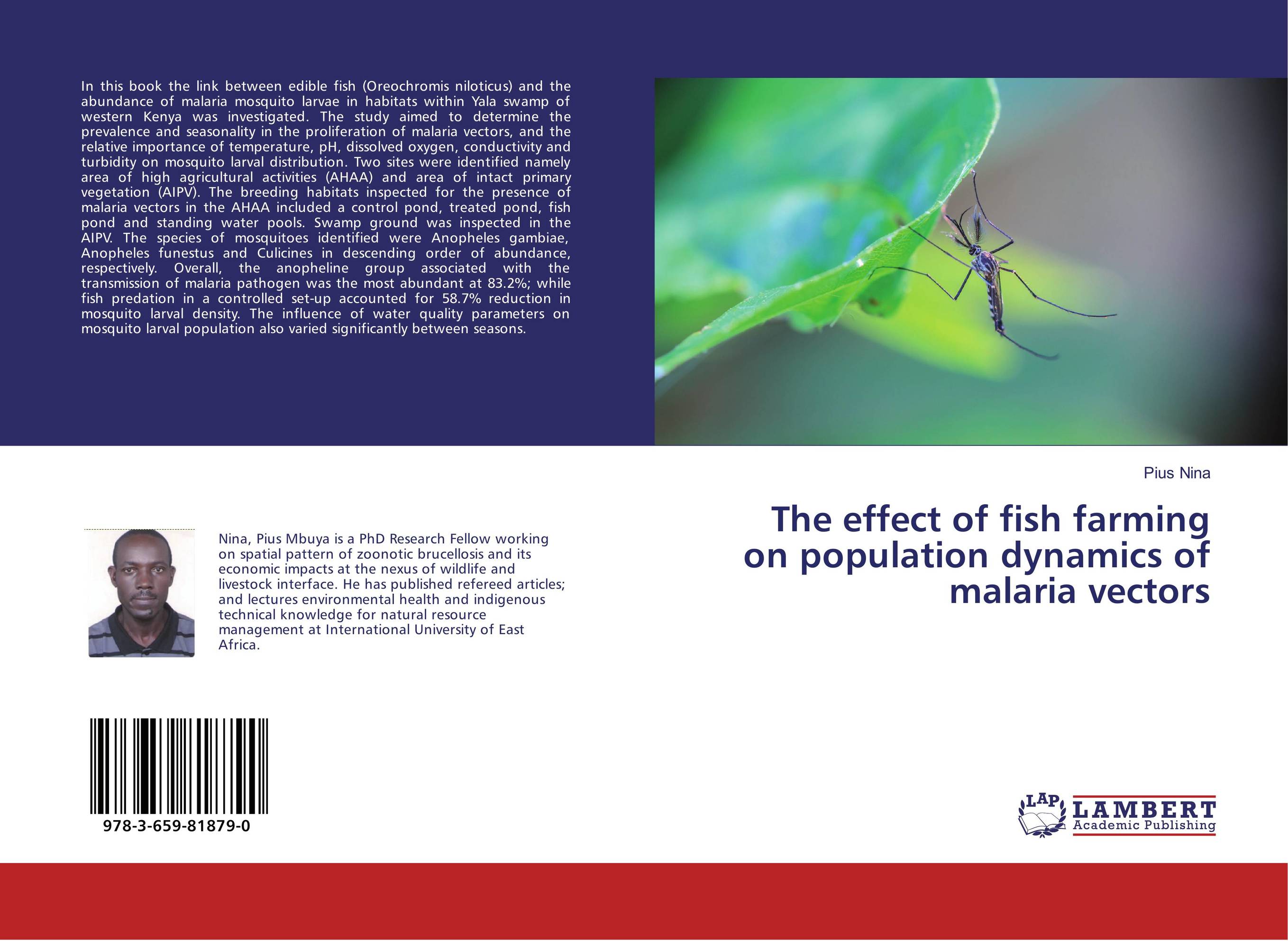| Поиск по каталогу |
|
(строгое соответствие)
|
- Профессиональная
- Научно-популярная
- Художественная
- Публицистика
- Детская
- Искусство
- Хобби, семья, дом
- Спорт
- Путеводители
- Блокноты, тетради, открытки
The effect of fish farming on population dynamics of malaria vectors.

В наличии
| Местонахождение: Алматы | Состояние экземпляра: новый |

Бумажная
версия
версия
Автор: Pius Nina
ISBN: 9783659818790
Год издания: 2016
Формат книги: 60×90/16 (145×215 мм)
Количество страниц: 84
Издательство: LAP LAMBERT Academic Publishing
Цена: 25834 тг
Положить в корзину
| Способы доставки в город Алматы * комплектация (срок до отгрузки) не более 2 рабочих дней |
| Самовывоз из города Алматы (пункты самовывоза партнёра CDEK) |
| Курьерская доставка CDEK из города Москва |
| Доставка Почтой России из города Москва |
Аннотация: In this book the link between edible fish (Oreochromis niloticus) and the abundance of malaria mosquito larvae in habitats within Yala swamp of western Kenya was investigated. The study aimed to determine the prevalence and seasonality in the proliferation of malaria vectors, and the relative importance of temperature, pH, dissolved oxygen, conductivity and turbidity on mosquito larval distribution. Two sites were identified namely area of high agricultural activities (AHAA) and area of intact primary vegetation (AIPV). The breeding habitats inspected for the presence of malaria vectors in the AHAA included a control pond, treated pond, fish pond and standing water pools. Swamp ground was inspected in the AIPV. The species of mosquitoes identified were Anopheles gambiae, Anopheles funestus and Culicines in descending order of abundance, respectively. Overall, the anopheline group associated with the transmission of malaria pathogen was the most abundant at 83.2%; while fish predation in a controlled set-up accounted for 58.7% reduction in mosquito larval density. The influence of water quality parameters on mosquito larval population also varied significantly between seasons.
Ключевые слова: Nile Tilapia, predation, Yala swamp, Mosquito Larvae



